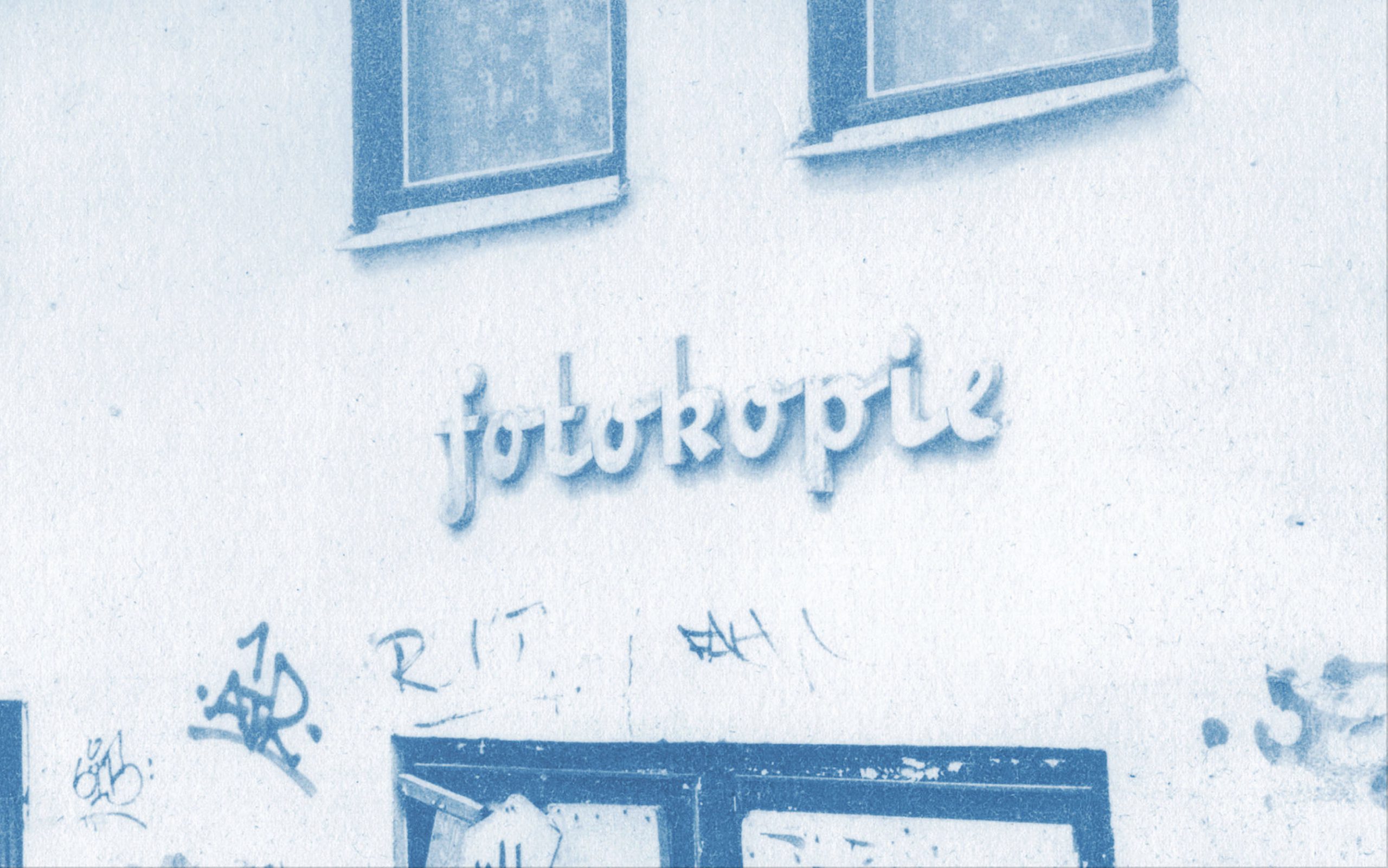
When I started making cyanotyps after wet plate photography, while searching for subjects on my hard drive, I found a photo I had taken in Weimar in 1999. It reminded me of the well-known work of René Magritte, La trahison des images (literally: “The betrayal of images”). The painting features a realistically painted pipe, with the words “Ceci n’est pas une pipe.” underneath. (French for “This is not a pipe.”).
René Magritte’s word-paintings revolve around the relationship between image and language. By confronting text and image, René Magritte formulated his doubts about the imageability of reality and fundamentally questioned perception.
If the image of a pipe, is not a pipe, then what is the photocopy of an image on which the word photocopy is written?
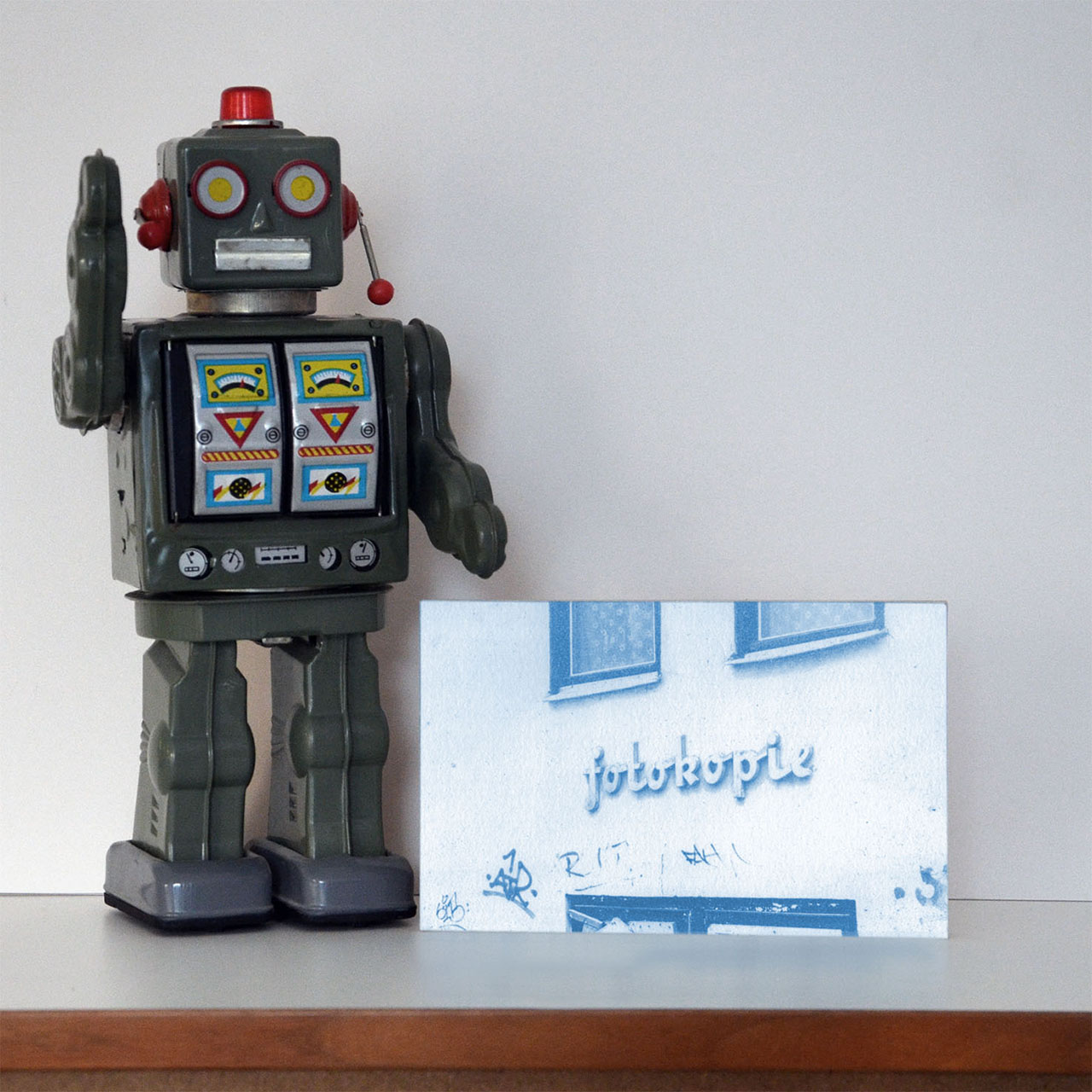
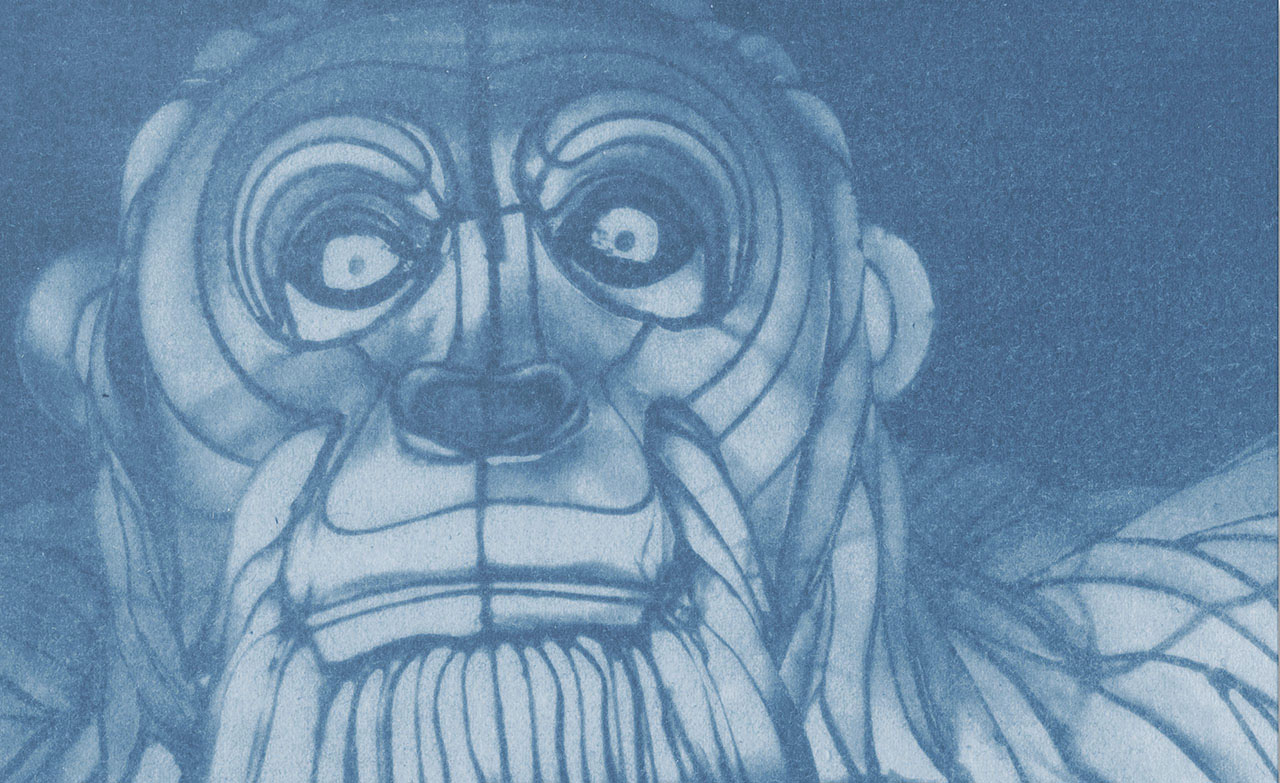
#cold #crowd #tinny music #sleeping animals #light figures #contemplation
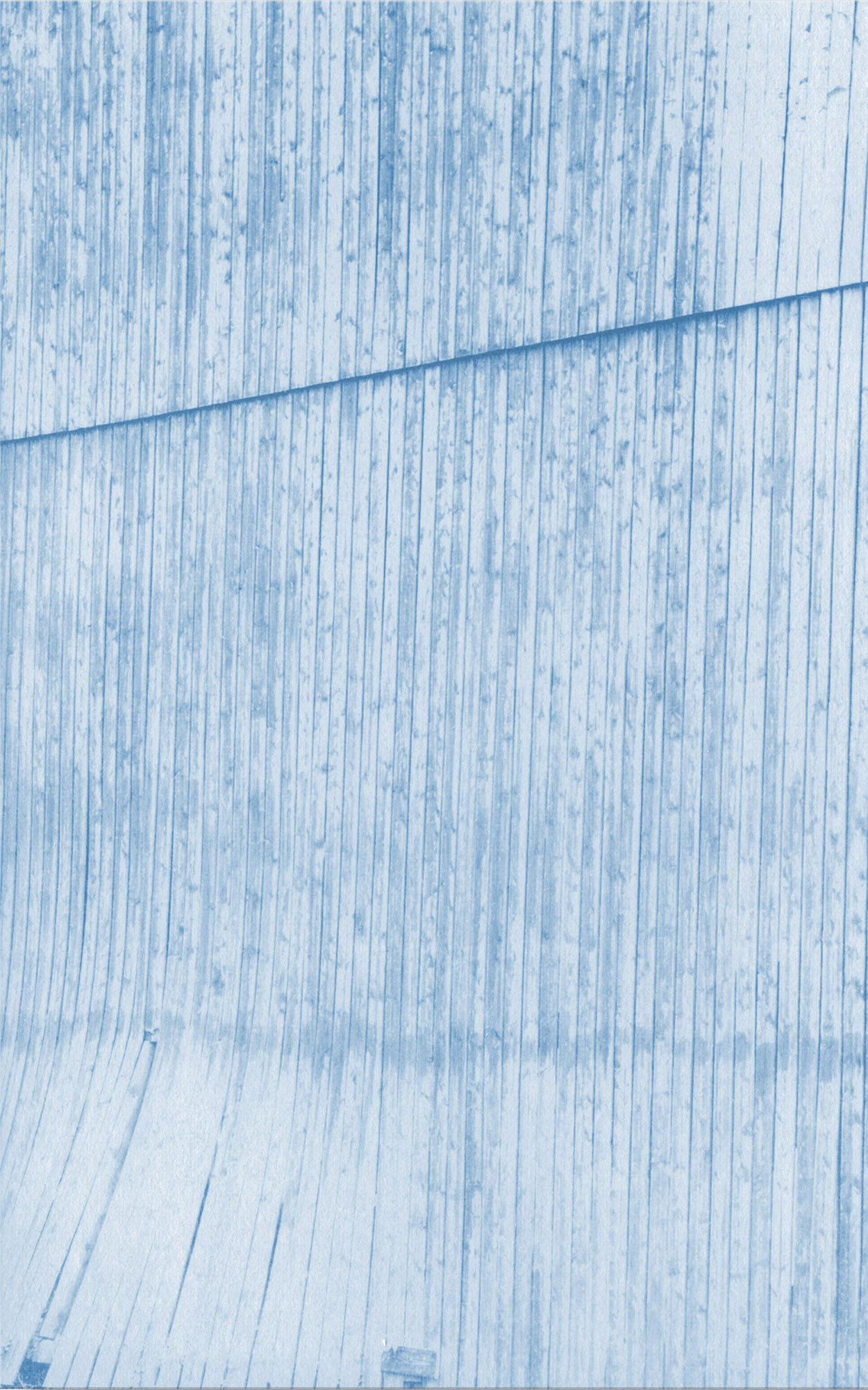
#pressure #tension #process #flexible
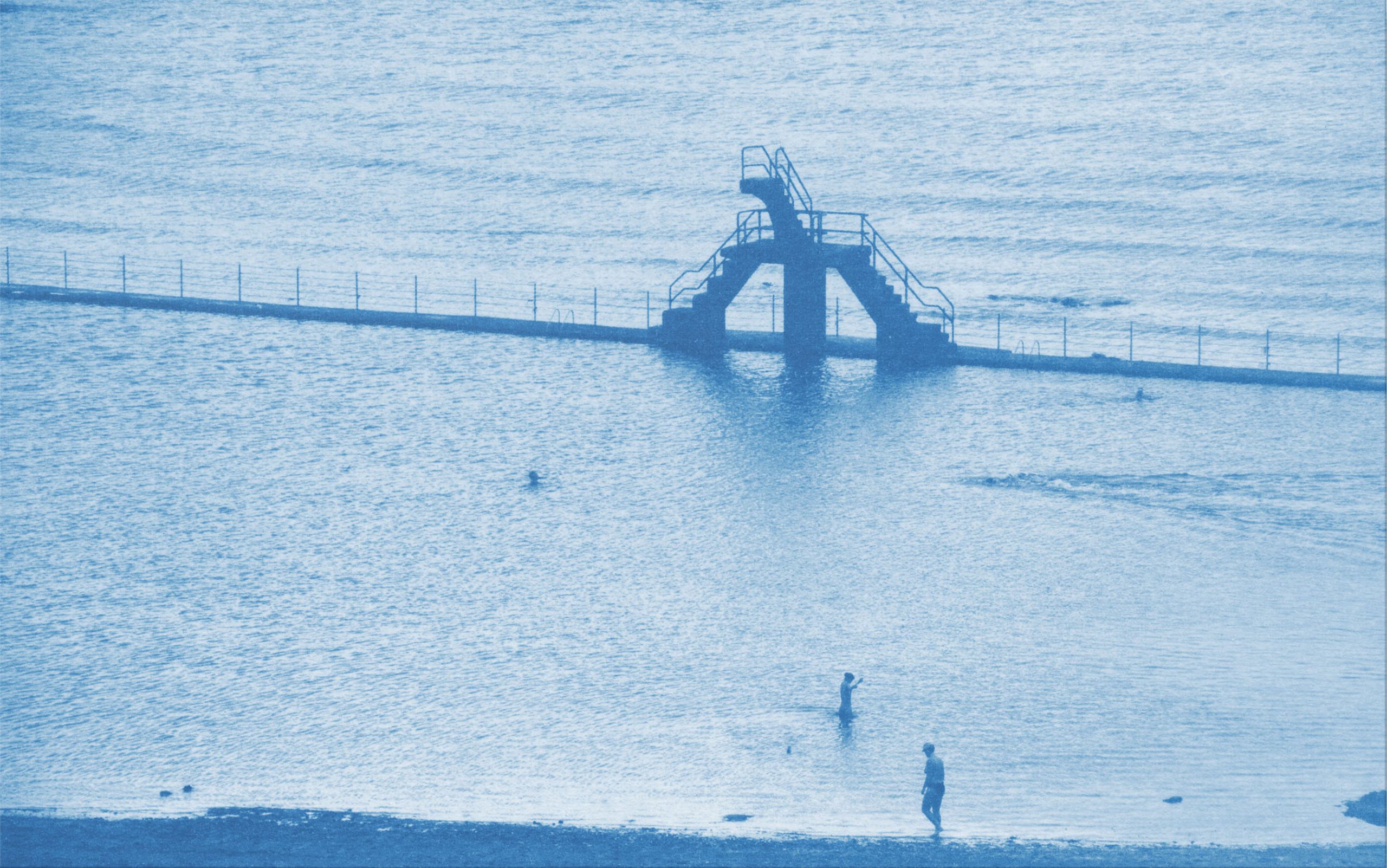
#separation #tides #moonbump #paws #cold salt water #headbutt #float #floating
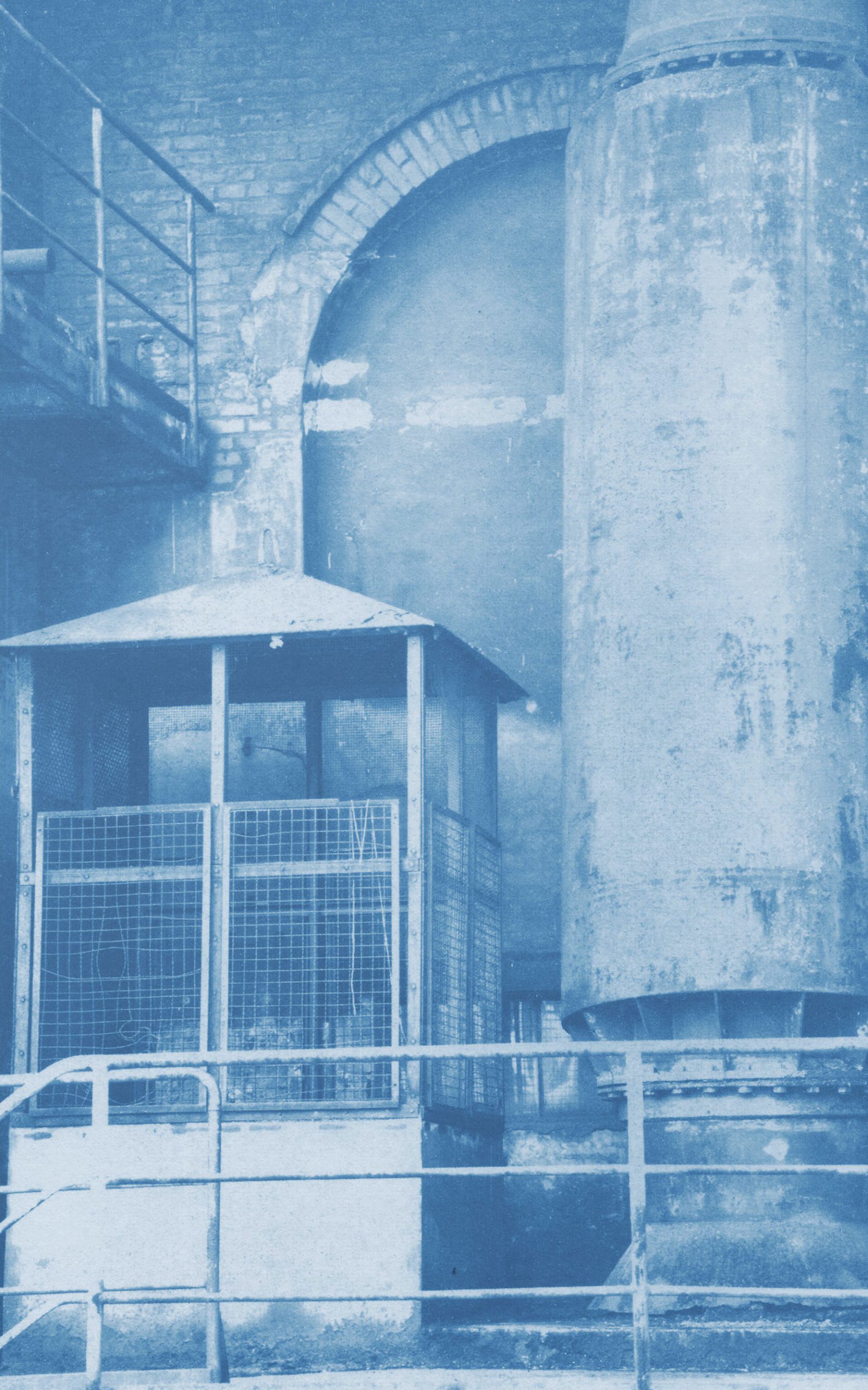
#differences #goodso #furtherso
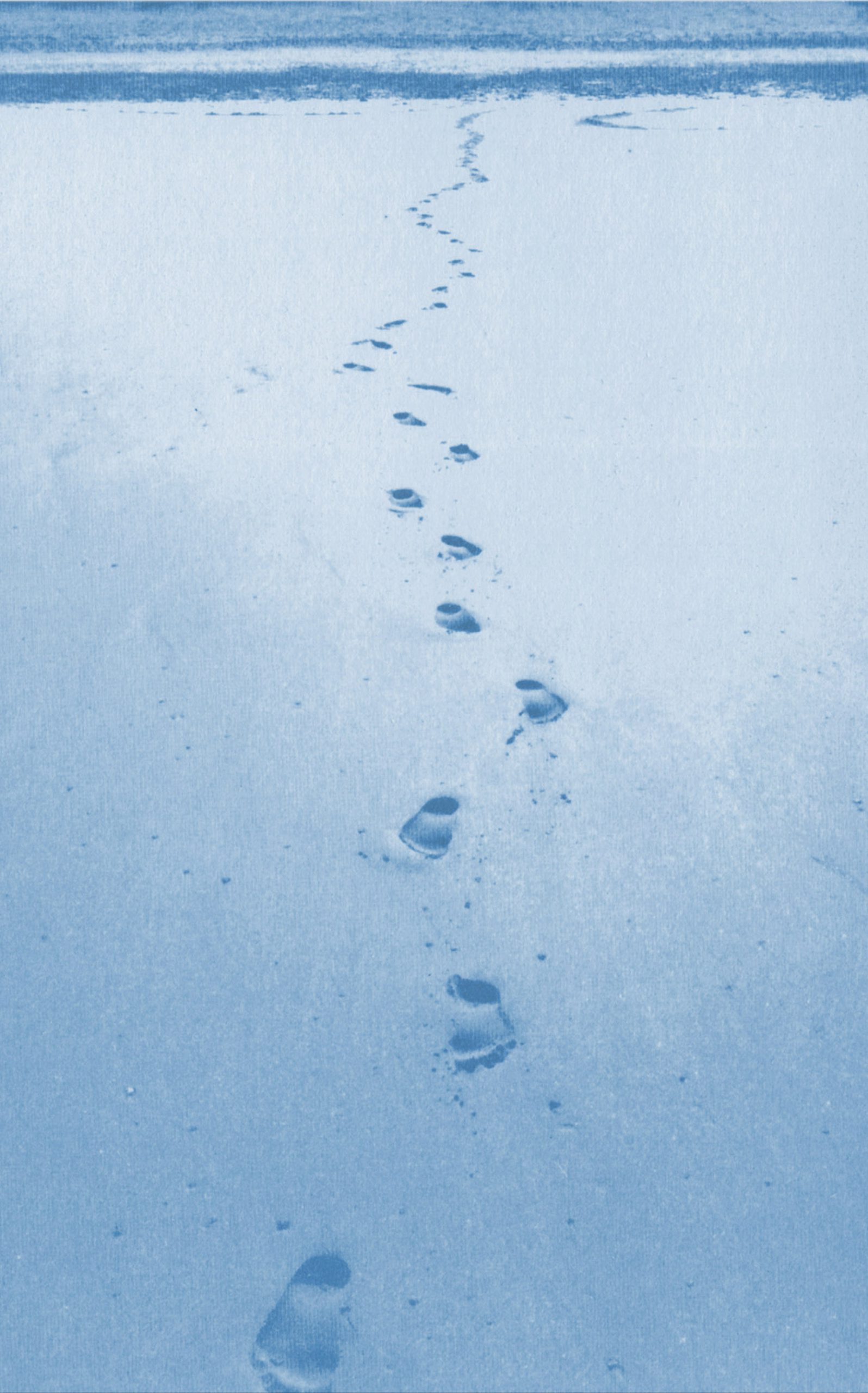
#beach #sea #america #ahead
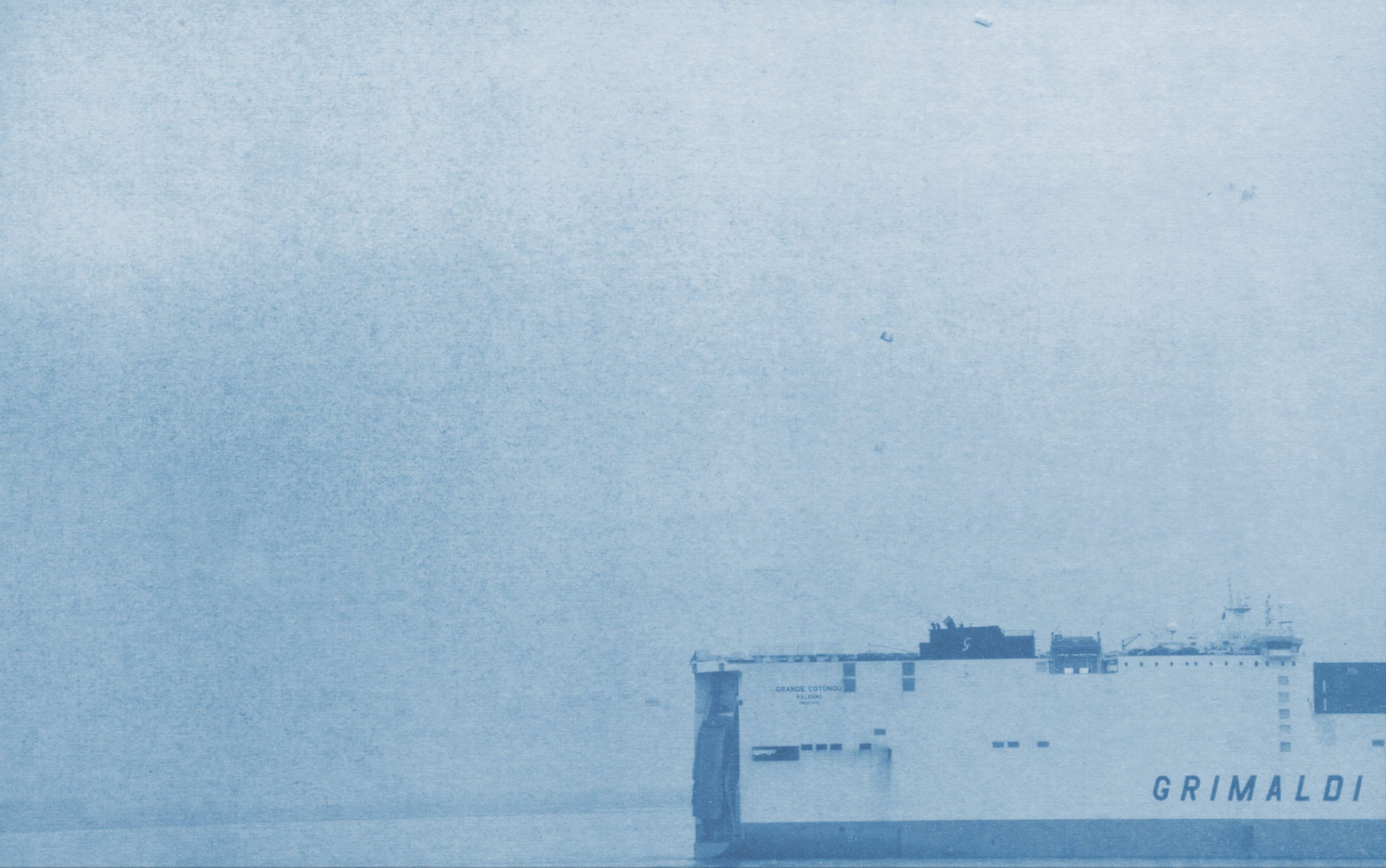
#expedition #missing
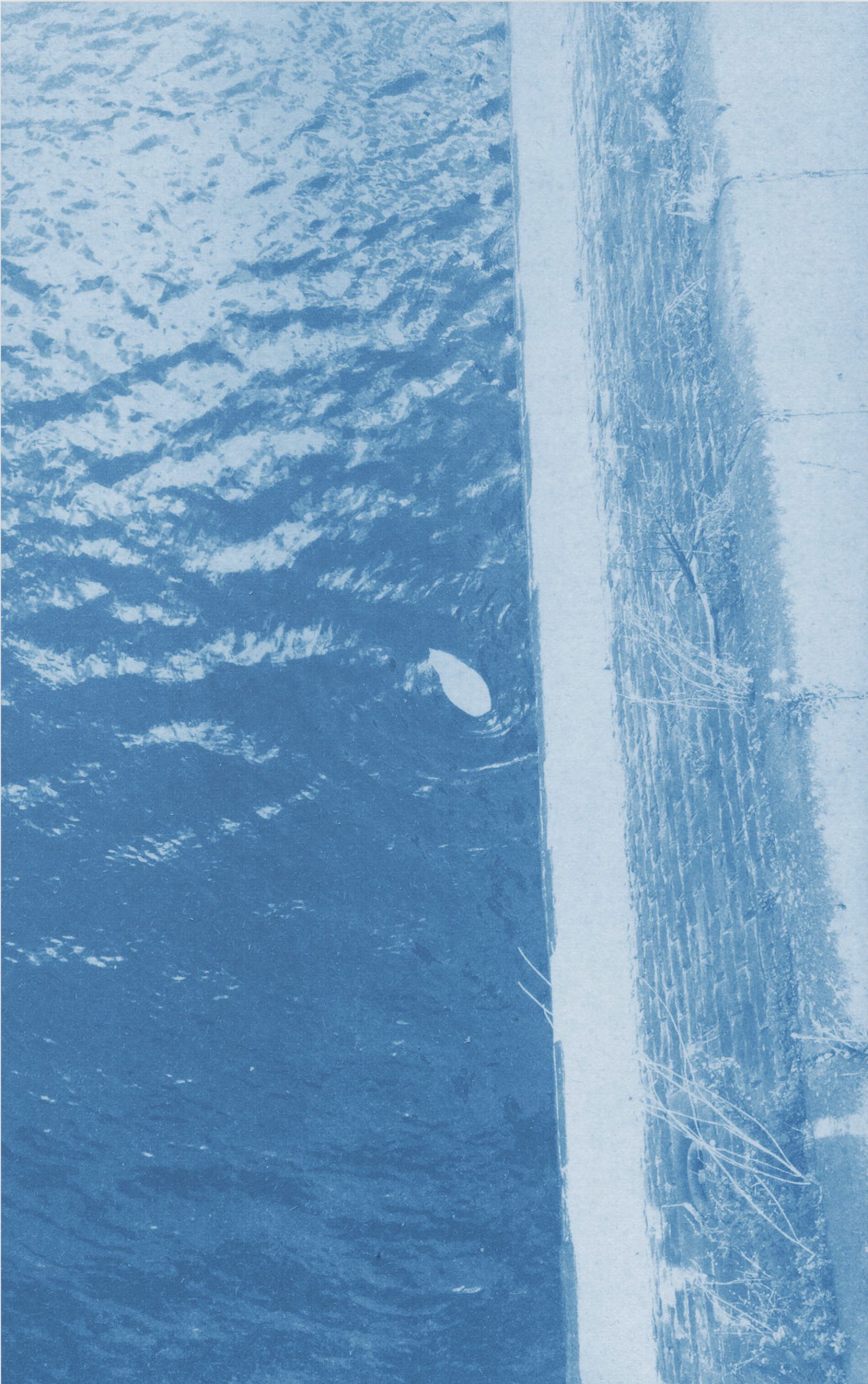
#lookdown #IseewhatIdon’tsee #surface
At the beginning, of course, is the selection of the template. In addition to the depicted motif, it also depends on properties such as tonal value distribution, gradation curve, contrast and natural the resolution and quality of the photo. To achieve a high level of detail, I use photos that would also be 300dpi in size according to the finished dimensions of the cyanotype. Then the photo is digitally converted into a black and white image and the gradation curve is adjusted to the process. Since cyanotype is a contact process, it is necessary to reverse the photo, so that at the end there is a black and white negative of the original template, from which a foil is made in the next step.
The film can be printed on overhead transparency using either a laser printer or an inkjet printer. Better results are achieved with a foil produced via CTF with a laser. The screen ruling here is 70, as is usually used for offset printing.
To prepare the solution, 20 g of green ammonium iron(III) citrate and 8 g of potassium hexacyanidoferrate(III) are needed per 100 ml of distilled water. Both mixtures are mixed separately and stored in brown glasses in the refrigerator. Each solution by itself is not yet photosensitive, only by mixing them in a ratio of 1:1 a photosensitivity. From now on, the liquid is sensitized to light, but the reaction time is quite sluggish and requires a high UV component in the light. Nevertheless, it is advisable to use red light when preparing the solution and coating the substrate.
In principle, the solution can be applied to any absorbent material that can later be washed out in water.
Good results are achieved with 300g hot pressed satin watercolor paper made of 100% cotton of the French traditional brand ARCHES in a glued block. If you do not use a glued block, the paper must be soaked beforehand, as in watercolor painting, and stretched wet on a surface. If one does not do this, it can happen that the paper forms waves due to the moisture and thus puddles are formed, which leads to an uneven distribution of the chemicals and in the end affects the quality. Once the paper is soaked with the liquid, drying can be accelerated with a hair dryer after about 15-30 minutes.
Both the amount of liquid, the brush duct and the exposure time influence the later result. The paper is now sensitive to light and should therefore be kept in a black, opaque photo paper bag until exposure.
The next step is to expose the prepared paper to light with a high UV content. Commercially available light bulbs have a low UV content and exposure to sunlight, which has a high content in the spectrum, is extremely inflexible and difficult to reproduce. Good results can be achieved with an OSRAM Vitalux 300, which used to be used as an altitude sun. It fits into a normal light bulb socket, but since it gets very hot due to its 300 watts, it should be mounted in a ceramic socket and in an appropriate suitable metal shade.
In a darkened room, the lamp is mounted at a distance of about 50 cm above a black wooden plate. Now the paper together with the negative is placed on top of each other under a 5mm thick glass plate so that the film lies flat on the paper and exposed for about 10 to 20 minutes. During the exposure, the paper turns from a light green to a grayish blue. With some experience, you can tell from the color whether the cyanotype is sufficiently exposed. Of course, you also have a decisive influence on the finished result. All the possibilities known from the classic development of photographic prints, such as overexposure, dodging, multiple exposure, masking, etc., can also be applied to the cyanotype process.
The last step after exposure is to wash the excess solution out of the paper in a developer tray for about 5 minutes with running water until it no longer has a green cast and the water remains clear. The paper can now be hung to dry and the development process is complete. The paper is now insensitive to light, but can still be post-exposed a bit.
If you wish, you can increase the luminosity by briefly swirling the paper in a hydrogen peroxide-water mixture.